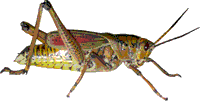Entomology Collections, General

Entomology Papers from Other Sources
Document Type
Article
Date of this Version
2009
Abstract
In the Ozark Mountains of the U.S.A., the red oak borer Enaphalodes rufulus contributes to the destruction of red oaks. To understand nutrient digestion in E. rufulus larvae, digestive proteinases are compared in both larvae fed heartwood phloem and those transferred to artificial diet. The pH of gut extracts is approximately 6.3 in the midgut and foregut and decreases to 5.5 in the hindgut region. The hydrolysis of casein by midgut extracts from E. rufulus larvae fed either artificial diet or phloem from tree sections increases in buffers greater than pH 6.19, with maximum hydrolysis being observed at pH 10.1. Casein zymogram analysis reveals two major proteinase activities in larval midgut extracts of diet-fed larvae, with molecular masses of approximately 25 and 40 – 60 kDa, whereas phloem-fed larvae have proteinase activities corresponding to 40, 45, 60, 80 and >100 kDa. Substrate analysis indicates at least one major trypsin-like activity in both gut extracts with a molecular mass of >100 kDa, but two chymotrypsin-like activities of approximately 25 and >200 kDa are found only in diet-fed larvae. Inhibitors of serine proteinases are most effective in reducing the general proteolytic activity of midgut extracts from larvae fed either food source. The data indicate that serine proteinase inhibitors have the potential to reduce E. rufulus larval damage to oaks. In particular, transgenic technologies incoporating trypsin inhibitors may be effective in reducing protein digestion in phloem-feeding larvae.


Comments
Published in Physiological Entomology (2009) 34, 152–157.